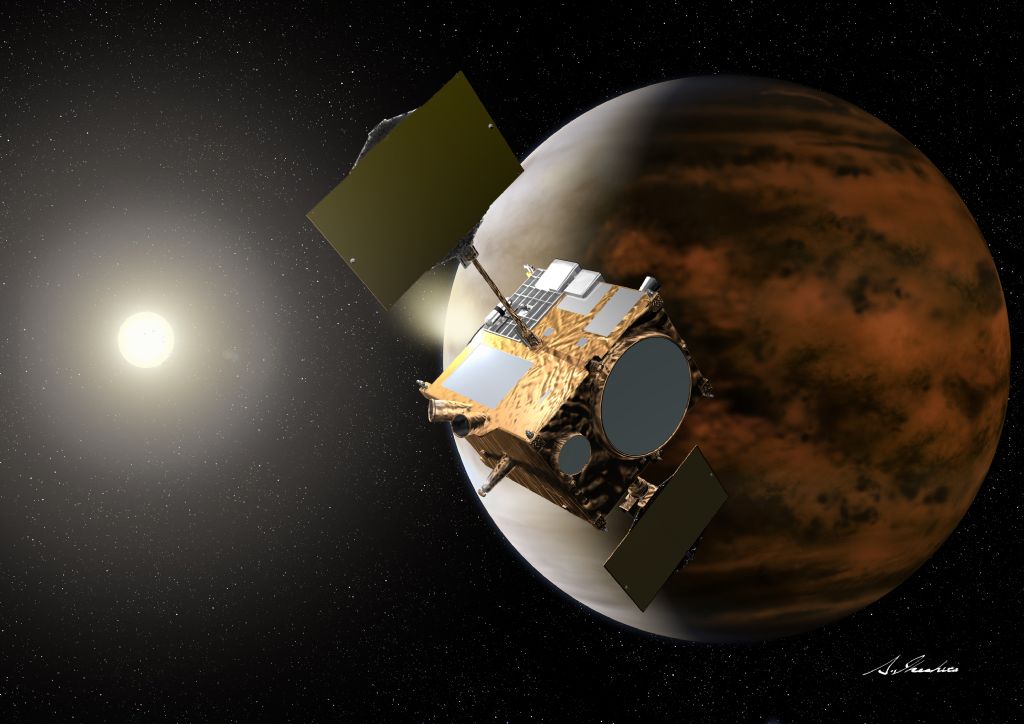Comet Leonard may have spawned meteor shower on Venus
It's unlikely, but possible the comet could have sparked a show as it passes by the planet.

Comet Leonard may be sparking meteor showers at Venus this weekend during a relatively close approach of the comet to the planet.
Officially known as comet C/2021 A1, also known as Comet Leonard was discovered in January by astronomer Gregory J. Leonard of the Mount Lemmon Infrared Observatory in Arizona. Its close pass of Venus this weekend gives skywatchers a marker in the evening sky to help spot the comet, which is at binocular visibility from Earth and may be just barely bright enough to be visible to the naked eye under clear, dark skies.
At Venus, though, the story is different. The orbit of the planet and the comet will come within 31,000 miles (50,000 km) of each other, which is equivalent to the geosynchronous satellite orbital path above Earth.
Comet Leonard is a once-in-a-lifetime comet for stargazers as its orbit takes about 80,000 years to round the sun. If you're looking for a telescope of binoculars to see planets in the sky, check out our guide for the best binoculars deals and the best telescope deals available now. Our best cameras for astrophotography and best lenses for astrophotography can also help you pick the best imaging gear to spot the next comet.
Want to see Comet Leonard? Here are telescope and binoculars recommendations

Given the thick cloud cover at Venus, watching a meteor shower at the planet would require you to be 35 to 40 miles (55 to 60 kilometers) above the surface, where the temperature and pressure are somewhat similar to Earth, Paul Byrne, a planetary scientist at Washington University in St. Louis who focuses on Venus, recently told Space.com.
"It is the only other place in the solar system where room temperature and pressure conditions are present and, potentially, an astronaut could stand on the railing of a gondola with a breathing apparatus on but otherwise in shirtsleeves," he said.
Qicheng Zhang is a planetary science graduate student at Caltech and lead author of a new paper exploring the scenario, posted July 26 to the preprint server arXiv.org and submitted to the Astronomical Journal.
Get the Space.com Newsletter
Breaking space news, the latest updates on rocket launches, skywatching events and more!

The paper suggested that the best scenario for a meteor shower occurs as Venus goes through the comet's trail, but it would require very high activity from the comet. That's a fairly rare scenario, but not impossible.
"If we did have a positive detection of meteors on Venus from this event, it would tell us that this comet was quite active at high distances from the sun," Zhang previously told Space.com.
Venus has only one orbiter in place: Japan's Akatsuki spacecraft. But Earth, Venus and the sun may be oriented in a way to allow Earth observers to see faint flashes from Comet Leonard's debris, Zhang said. (By contrast, a close flyby of Comet Siding Spring near Mars in 2014 was spotted by multiple spacecraft.)
Editor's Note: If you snap an amazing comet or night sky picture and would like to share it with Space.com readers, send your photos, comments, and your name and location to spacephotos@space.com.
Follow Elizabeth Howell on Twitter @howellspace. Follow us on Twitter @Spacedotcom or Facebook.
Join our Space Forums to keep talking space on the latest missions, night sky and more! And if you have a news tip, correction or comment, let us know at: community@space.com.

Elizabeth Howell (she/her), Ph.D., was a staff writer in the spaceflight channel between 2022 and 2024 specializing in Canadian space news. She was contributing writer for Space.com for 10 years from 2012 to 2024. Elizabeth's reporting includes multiple exclusives with the White House, leading world coverage about a lost-and-found space tomato on the International Space Station, witnessing five human spaceflight launches on two continents, flying parabolic, working inside a spacesuit, and participating in a simulated Mars mission. Her latest book, "Why Am I Taller?" (ECW Press, 2022) is co-written with astronaut Dave Williams.









